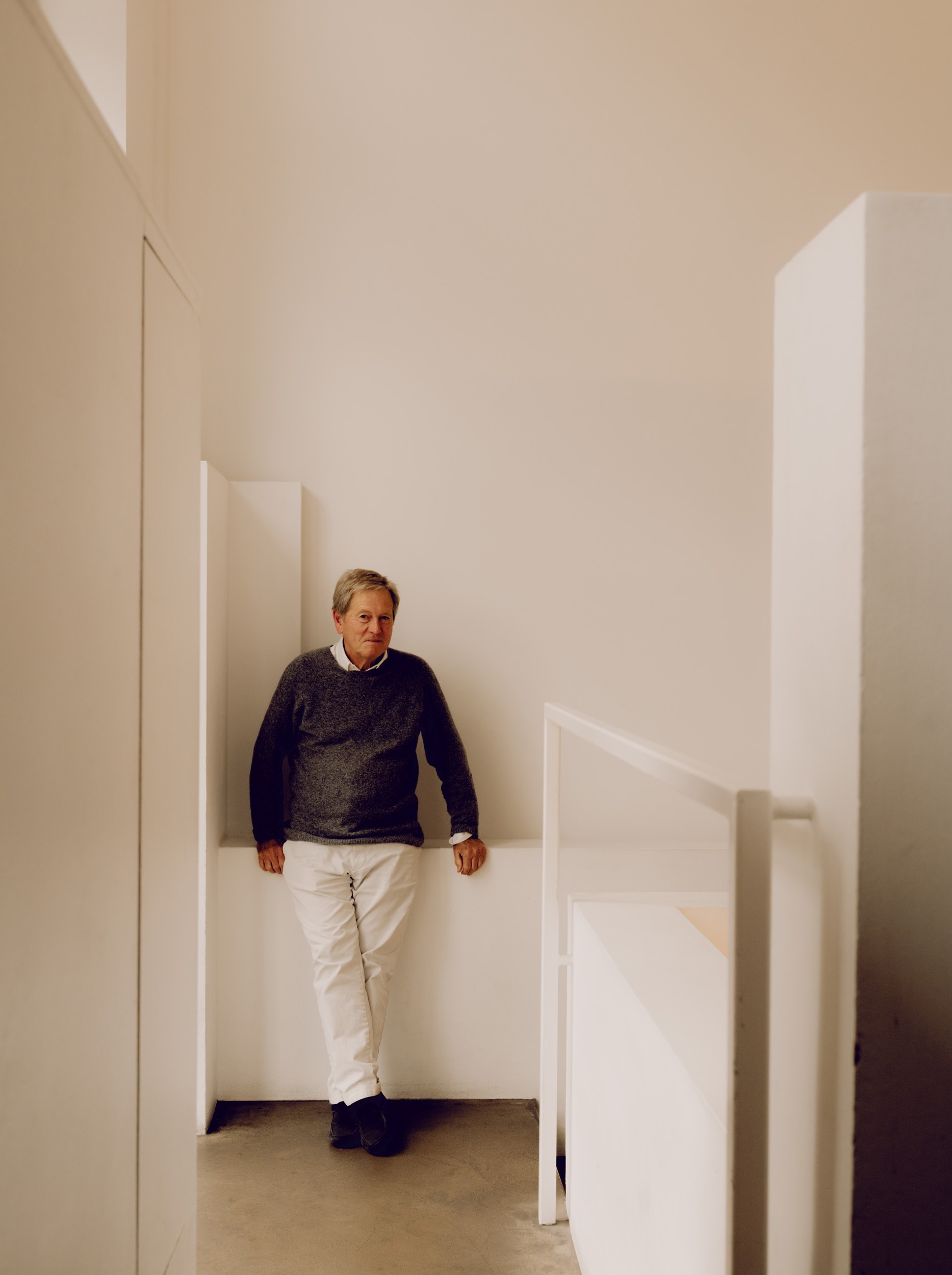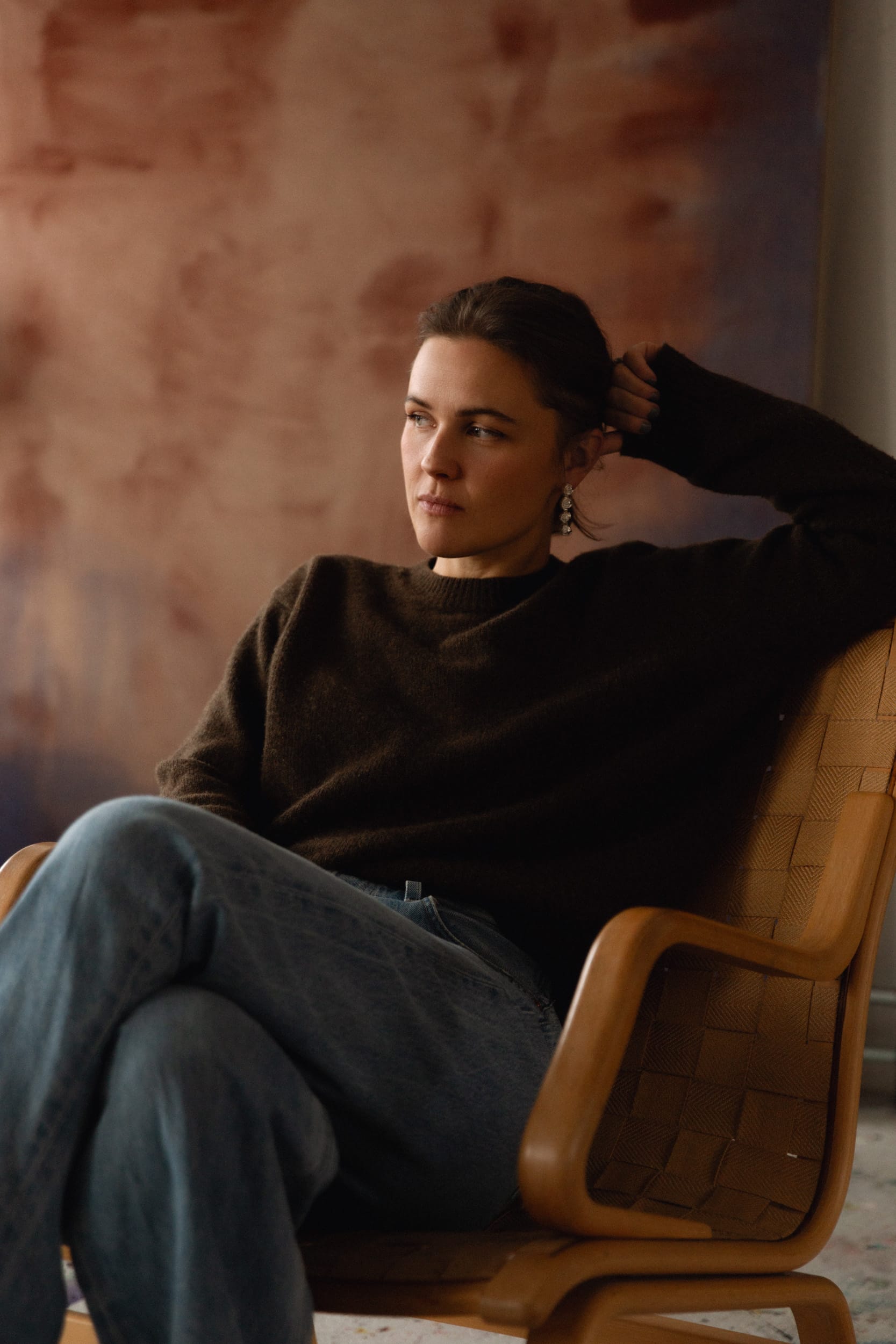Memento MoriAndrea Codrington Lippke examines the ways in which our most ordinary household objects continue their lives after we’re gone.
Memento MoriAndrea Codrington Lippke examines the ways in which our most ordinary household objects continue their lives after we’re gone.









“In the end, maybe it’s exactly those humble, uncurated objects that form the real stories of our lives”
There is an unsettling time after the death of a loved one during which inanimate possessions become unmistakably alive—more alive, in fact, than the person to whom they once belonged. I experienced this last October when, over a 10-day period of home hospice care, my mother went from being a familiar, though very ill, presence, to an entirely alien absence.
A week later, I was expecting a rush of emotions when I sorted through those possessions that were most emblematic of her and was confused by the fact that I felt practically nothing as I made piles to throw away, give away or keep myself. What I wasn’t prepared for was my reaction to the random array of everyday objects that populated her side of the bathroom vanity.
Ultimately, it was a hairbrush that triggered my grief—relegated to the darkest recesses of my mother’s cabinet but still bearing strands of her fine blonde hair. I put it in a small makeup bag and packed it along with her favorite books, art supplies, pieces of jewelry and clothing and brought it home with me, wondering at the seeming irrationality of the action. If I had been living during Victorian times, perhaps I would have incorporated my mother’s hair into mourning jewelry—a ring that bore a small image painted by individual strands or a bracelet formed out of braided locks. Instead, eight months later and long after my mother’s other belongings have been integrated into my household, the hairbrush still sits in its small bag in the corner of my bedroom, unused and untouched. I know I will never throw it away but also can’t bring myself to look at it—and I don’t really understand why.
Maybe my first mistake is in thinking that objects are just things—industrial helpmates, as in the case of my mother’s hairbrush, whose only meaning is derived from the service they provide. Hannah Arendt, the 20th-century philosopher, expressed a much higher opinion of the nature of “the things of the world,” which she believed had the function of “stabilizing human life” in the flow of time. “Men,” she writes in her 1958 book The Human Condition, “their ever-changing nature notwithstanding, can retrieve their sameness, that is their identity, by being related to the same chair and the same table.”
If Arendt is right and we do gain our identity in part by interacting with the world of objects, then could it be that the inverse is also true? Material culture theorists, like the University of Southern California anthropologist Janet Hoskins, advocate for the existence of “biographical objects” that take on attributes of the people who own them. While Hoskins’ studies revolve around fieldwork she undertook on an Indonesian island, there are others—like the renowned psychologist Mihaly Csikszentmihalyi—who have extended the idea to the average Western household. “When someone invests psychic energy in an object,” he writes in The Meaning of Things: Domestic Symbols and the Self, “that object becomes ‘charged’ with the energy of the agent.” He illustrates the point with the example of his favorite armchair and how the act of sitting in its well-worn velvet embrace has shaped his consciousness to such an extent that the “chair is as much a part of myself as anything can possibly be.”
More than mere objects then, the things that populate our lives—armchairs, yes, but also hairbrushes—contain our very presence. And that, of course, is what becomes so upsetting when someone dies and their possessions suddenly become stand-ins.
Los Angeles–based photographer Catherine Opie experienced this when, in 2011, she spent six months shooting the contents of Elizabeth Taylor’s house as an indirect portrait of the film star. Despite such unprecedented proximity to Taylor’s belongings, Opie never actually met the Hollywood icon. The resulting series, 700 Nimes Road, captures the expected trappings of the actress’s public life—the jewelry, shoes, gowns and celebrity photos—side by side with traces of a more quotidian existence: a jumble of emery boards in a kitschy porcelain cup, a dog-eared instruction manual for a remote control, scrape marks on the kitchen wall made by a red chair.
Halfway through Opie’s project, Taylor unexpectedly died, leaving the artist to photograph the house as it was being dismantled. All of a sudden Opie was making a post-mortem portrait. Though the majority of the 3,000 photos she took were straightforward documentary images, Opie chose to shoot Taylor’s jewelry after her death with an uncharacteristically soft focus—an effort to place them “as memory, moving light,” as she says in an article in The Guardian.
Though 700 Nimes Road does provide a moving and unexpectedly human portrait of Taylor, looking through the images with an eye to spotting the traces of a real life lived feels somehow transgressive. In her 1969 book Biographical Objects, French sociologist Violette Morin writes that “to meddle in the space between a biographical object and its owner is always…the act of a voyeur.” But how do we deal with things that have been orphaned by the deceased except by meddling? And how do we meddle with these things without feeling at the very least terrible—and sometimes even terrified?
Literature is filled with instances of melancholy encounters with objects that have been left behind. In her autobiographical book A Very Easy Death, Simone de Beauvoir relays the experience of coming upon her dead mother’s knitting basket and feeling an emotion that “rose up and drowned us.” She goes on to write that “Everyone knows the power of things: life solidified in them, more immediately present than in any one of its instants.” Paul Auster’s The Invention of Solitude intensifies the emotional heat even more. “There is nothing more terrible,” he writes, “than having to face the objects of a dead man… they say something to us standing there not as objects but as remnants of thought, of consciousness.” Even Joan Didion, the ultimate exemplar of literary sangfroid, describes her experience of coming across her late husband’s things in fraught terms. “When I walked into the apartment and saw John’s jacket and scarf still lying on the chair,” she writes in The Year of Magical Thinking, “I wondered what an uncool customer would be allowed to do. Break down? Require sedation? Scream?”
What to do, then, with these rogue reminders of loved ones that, at least in the short term, bring more pain than pleasure? The obvious answer is to get rid of them, although this can bring up further emotional complications. A Harlem-based performance artist named Nate Hill hit upon an idea in 2009 that provided one solution. Clad in all black clothes and an oversized plastic bear head, Hill offered heartsick New Yorkers the services of Death Bear, a character who, according to his website, “will take things from you that trigger painful memories and stow them away in his cave where they will remain forever allowing you to move on with your life.” Usually the people who called upon Death Bear were suffering from a recent breakup—“women with love letters or guys with underwear,” Hill explains—but in one instance he was contacted by someone who insisted on meeting in a Brooklyn park rather than at home. “The man came up,” he remembers, “and handed me an eyeglass case. Inside it was a bullet, a picture of a female soldier and dog tags.” Though the man revealed nothing about the origin of the objects, they were enough for Hill to form a narrative that was affecting even to him—a total stranger. “I broke down inside the mask after he turned away to go,” he admits.
Orphan objects are by nature unsettling for the very reason that they have lost their fixed identity. “Death makes all material possessions nomadic,” writes sociologist Margaret Gibson in Objects of the Dead: Mourning and Memory in Everyday Life. On top of being reminders of the person who has died, their in-between status can serve to destabilize our own sense of solidity in the world, becoming unwitting memento mori in the process.
The Brooklyn-based documentary photographer Jennifer Loeber discovered this for herself in 2013 after sorting through her recently deceased mother’s belongings. She gathered several bags’ worth of things—including clothing, boots and the contents of a makeup pouch—but ended up storing them for months in the back of a closet because they were too painful to deal with. “Knowing that those bags of her things were in my closet serving no real purpose other than upsetting me every time I reached for clean towels began to eat away at me,” she remembers.
Loeber hit upon an idea while organizing family photos and noticing that many of the images showed her mother interacting with the things she had instinctively chosen to keep. “I began pairing objects with images and playing around with the connections between the two,” she says. Rather than set up a studio shoot, which seemed overwhelming to the grieving photographer, Loeber took iPhone photos and started posting the images to Instagram. The result was not only the beginnings of a poignant series called “Left Behind,” but a grounding amidst the swirling aftermath of death. “The simplified approach to photographing the images took the sting out of the process and allowed me to just be in the moment,” she says. Sometimes the relationship between object and photo is direct—a pearl ring that appears in a vintage image of her mother holding a white parakeet, for instance—but often the pairing is more associative and all the more resonant for it. Loeber’s most affecting image features the matching of a well-worn tube of Revlon lipstick and a photo of her as a young girl in her mother’s arms. Rather than remain an aching reminder of very personal absence, the lipstick has been transmuted into an artwork that has universal meaning.
Of course, there have been civilizations in times past that believed the best place for a person’s belongings was in the afterlife itself. Although most early ancient Egyptians were interred in sandpits, archaeologist Howard Carter’s 1922 discovery of the tomb of Tutankhamun shed light on later ornate burial practices. The tomb prominently featured more than 5,000 objects—many of which were so-called “grave goods” meant to aid the deceased pharaoh in navigating the spirit world in style. Vikings were also often buried with objects that were thought to be of use in the afterlife—or at the very least represent their worldly value to the underworld. The most impressive Norse grave goods discovery, the Oseberg Viking ship, was unearthed in Norway in 1904 and included an ornately decorated oak vessel containing beds, carts, sleighs, chests, buckets, textiles, tools and seven wild apples—sustenance, no doubt, for the two women buried along with it.
Though it may be easy to pawn off the idea of grave goods as too literal and a thing of the past, John Troyer, director of the Centre for Death and Society at the University of Bath in the UK, points out that this isn’t the case. “If you talk to any funeral director,” he says, “you’ll find that people are always putting stuff in coffins.” If 19th- and 20th-century archaeologists were able to piece together former civilizations through the discovery of ancient grave goods, then it’s potentially disturbing to think of what future academics will make of us. Amy Cunningham, a Brooklyn-based “death educator” and funeral director, says that in her many years of work in the field she has only encountered a few instances of contemporary grave goods—once when mourners left a baseball cap and some beer in a coffin and another time when the friends of a deceased 13-year-old left him with his favorite sandwich.
There are other cultures that abstract the concept of grave goods by trading in actual objects for symbolic ones. In an elaborate version of traditional joss—the ritual immolation of paper money to ensure that the deceased prosper in the hereafter—some contemporary Chinese mourners burn bamboo paper sculptures of everything their family member used in life, or wanted to. A series of images by the Hong Kong–based artist Kurt Tong called “In Case it Rains in Heaven” shows the ways in which consumerism has impacted this sacrosanct tradition.
A video that accompanies the photographs shows the burning of everything from household tools like rice cookers, microwaves, electric fans and hairdryers to status symbols like Louis Vuitton bags, iPhones, BMWs—even a Kalashnikov automatic rifle. In one bizarre instance of artifice meeting life, a merchant of such funeral supplies in New York’s Chinatown was arrested for copyright infringement in 2011. The offending items: a paper handbag that sported a fake Burberry logo and one that bore the telltale Louis Vuitton insignia.
Carpenters in Accra, Ghana, have created a thriving industry for “fantasy” coffins that resemble a tool of the deceased’s trade or an object of passion, daily use or desire. The trend evolved from the tradition of burying chieftains on the palanquins that carried them during their lifetime. Why not, midcentury craftsmen wondered, also create funerary vessels that related to the life of commoners? The first such object, according to Ga ethnic history, was designed by a carpenter named Seth Kane Kwei, who in the mid-1950s sent his grandmother into the afterlife in a coffin shaped like the airplanes she admired at the recently built Kotoka International Airport. More than half a century later, Accra is filled with artisans creating elaborate fantasy coffins—everything from hammers, pens and cameras to Nike Air sneakers, Mercedes sedans and Nokia cell phones. A recent feature by British filmmaker Benjamin Wigley called Paa Joe and The Lion premiered at the Sheffield Documentary Festival this June, exploring the life and times of one of Ghana’s most renowned coffin craftsmen, whose work has been collected by the British Museum, the Smithsonian and the Brooklyn Museum.
While consumer brand names may continue endowing the dead with status in China and Ghana, in the US sometimes it is the anonymous objects of deceased celebrities that pass on a special aura to the living. When Sotheby’s auctioned off the belongings of Jackie Kennedy Onassis in 1996, even the estate’s most unspectacular objects brought in outsized bids—including a lot comprised of old magazines for $12,650, a monogrammed tape measure for $45,000 and a collection of three pillows for $25,300. “They are on their way now,” snarked Newsweek writer Jerry Adler, “crated and nestled in bubble wrap or tucked in Louis Vuitton carry-ons, carrying their little spark of cachet to Grosse Pointe, River Oaks or Malibu and many other places Jackie wouldn’t have been caught dead in.”
Despite an estimated intrinsic worth of $4.6 million, Jackie’s estate gained a whopping $34.5 million on the sales, mostly on the merit of celebrity provenance.
In an age when everyone can have his or her proverbial 15 minutes of fame, it seems fitting that even the detritus of celebrity can become priceless. In arguably one of his most cunning moves, Andy Warhol realized that the ephemera of his life would one day prove valuable so began collecting it in boxes that were sealed and stowed as makeshift time capsules.
Flyers, postage stamps, greeting cards and knick-knacks exist side by side with such unlikely keepsakes as toenail clippings, rotting food and dead ants—a seemingly haphazard assemblage of items that was nonetheless curated by the artist. The Andy Warhol Museum in Pittsburgh is the repository of all 612 boxes, which have been carefully opened and meticulously archived and bear a Tutankhamun-like trove of insight for art historians and Warhol fans.
When hundreds of people lined up at the museum for a chance to view contents culled from Warhol’s penultimate time capsule, BBC radio presenter Lenny Henry described the event in funerary terms—“like people walking past an open coffin,” though instead of a body there were the material remains of his life. Warhol the person (as opposed to persona) was famously afraid of death—obsessed, even, as evidenced in many series that involved imagery such as car crashes, electric chairs, suicides, skulls and last suppers. More revealing, perhaps, than his cannily curated capsules is a photograph taken of the artist’s studio shortly after his death in 1987.
Amidst a welter of boxes, shopping bags, a sculpture of Hercules and no fewer than three pieces of exercise equipment sits a sculptural representation of Leonardo da Vinci’s Last Supper as well as one of the massive canvases that Warhol painted on the famous religious theme.
Life and death, the sacred and profane, heroism and humility: These are the themes that emerge from Warhol’s distinctly unmediated studio space—and ones that are perhaps more telling than any time capsule could be.
In the end, maybe it’s exactly those humble, uncurated objects that form the real stories of our lives—my mother’s orphaned hairbrush included. And while objects may be a poor stand-in for a person, they do provide what the English poet David Whyte in “Everything is Waiting for You” calls “the grand array; the swelling presence, and the chorus, crowding out your solo voice.”



